Name HMS Oakley Commissioned 17 June 1941 Commissioned June 1941 Launched 30 October 1940 Draft 2.4 m | Laid down 22 November 1939 Name ORP Kujawiak Construction started 22 November 1939 Length 85 m | |
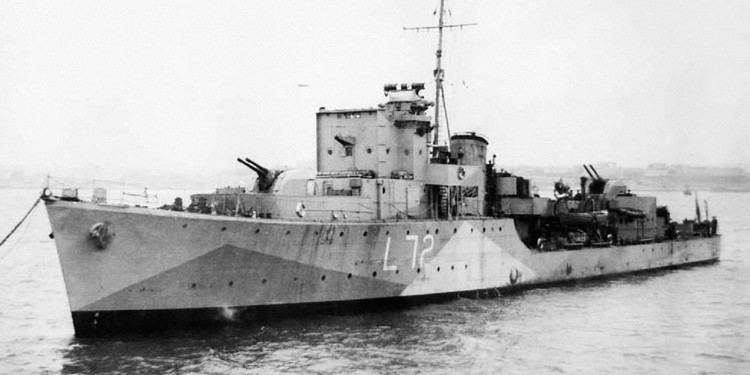 | ||
ORP Kujawiak was a British Type II Hunt-class destroyer escort, formerly named HMS Oakley.
Contents
Kujawiak was built by Vickers-Armstrongs at the company's High Walker yard on the River Tyne. Her keel was laid down on 22 November 1939 and she was launched on 30 October 1940. Originally commissioned into the Royal Navy, she was renamed and commissioned into the Polish Navy in June 1941.
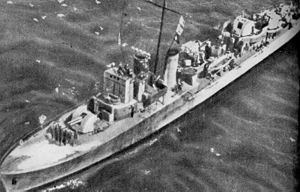
Kujawiak was sunk on 16 June 1942 after running into a mine near Malta while participating in Operation Harpoon. 13 Polish sailors died and 20 were wounded.
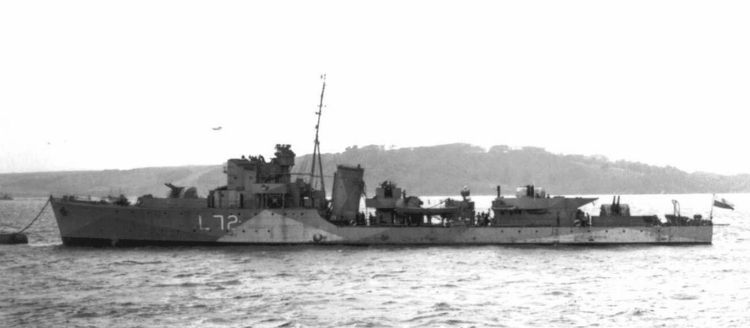
Details of war service
Details of war service for ORP Kujawiak:
1941
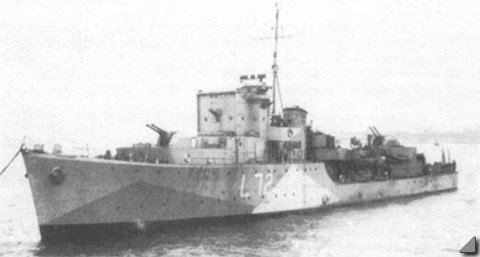
On 18 June Kujawiak came under attack by German aircraft whilst on passage from Tyne to Scapa Flow to work-up for operational service with ships of Home Fleet. Fire from the aircraft hit the 4-inch ready-use ammunition which exploded causing one fatal casualty. On 25 July she joined the 15th Destroyer Flotilla based at Plymouth for local convoy escort and patrol duties.
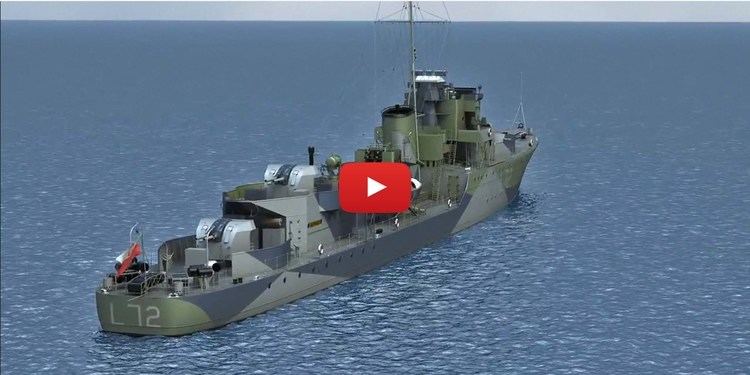
Later that year on 23 October Kujawiak deployed with fellow Polish destroyer ORP Krakowiak for escort of inward Convoy SL89 during final stage of passage in Irish Sea from Freetown into Liverpool. On 22 December she sailed from Scapa Flow as part of Force J to carry out landings on the Lofoten Islands as part of Operation Claymore. Two days later on 27 December the destroyer sustained slight damage from a near miss during air attacks.
1942

In June 1942 Kujawiak was nominated for loan service with Home Fleet for escort of planned Malta Relief convoy (Operation Harpoon). On 6 June she joined military Convoy WS19S in the Northwest Approaches as part of Ocean Escort for passage to Gibraltar. On 12 June she joined Force X at Gibraltar for escort of convoy for passage to Malta through Sicilian Narrows. On 14 June the convoy came under heavy and sustained air attacks during which the cruiser Liverpool was damaged. The following day the air attacks continued and Kujawiak went into action with Italian warships attempting to intercept and attack the convoy.
Near midnight on 16 June, while entering Grand Harbor, Malta Kujawiak sustained major structural damage forward after detonating a mine while going to the aid of Badsworth after she had struck a mine. Kujawiak sank before a successful tow could be achieved.
Search for wreck
In December 2011, marine documentary-maker Emi Farrugia announced plans to search for the wreck of Kujawiak. An approximate position given by the British Ministry of Defence gave no proper indication of the wreck's location and Farrugia stated that the search would focus on at least 8 square kilometres (3.1 sq mi) circling the three approximate positions that are now in hand.
Discovery of wreck
On 22 September 2014 a team of Polish explorers and an American from the Wreck Expeditions Association discovered the resting place of Kujawiak, designated L72, off of Malta.
The expedition team consisted of Team Leader Peter Wytykowski, Expedition Leader Roman Zajder, Michał Szczepaniak, Robert Głuchowski, Bartek Grynda -an underwater technology and remotely operated underwater vehicle (ROV) specialist-, Marcin Sadowski, Agata Radecka -whose grandmother's uncle was the commander of Kujawiak-, and Chris Kraska of the Ohio Maritime Archaeological Survey Team -whose father, Jan Kraska, was a seaman on Kujawiak and survived her sinking. Using ROV footage and original blueprints from the Hunt Type II escort destroyer the team has ascertained that her only possible identity is Kujawiak.
The discovery has been shared with Maltese and Polish officials but the coordinates of the wreck are being kept secret for the time being. The Maltese government is awaiting the team's final report and has indicated the wreck site will be designated a historic site and a war grave.
The team returned to Malta in the summer of 2015 and made several dives on the wreck taking video footage. They also placed on the wreck a memorial plaque to the sailors who perished during her sinking. The team returned again in 2016, this time with a mission to map the wreck further and locate the ships bell.
In May 2017 the team will return a final time to remove the ship's bell for conservation and display.
